Using additions and decreases, you can decorate surface of your product with volume structures, creating different effects. If to add group heifer, and then sharply to lower them, the small knot or bumps which can be used for giving of bigger expressiveness to usual plait or openwork pattern will turn out. The big groups of decorative additions and decrease executed in several rows allow to create convex structure flat, relief outline — or leaf which can be used as part of motive or to be integral part of pattern of knitting.
Small knots are carried out from one loop and come to the end without work turning. Bumps are also knitted from one loop. it is necessary to provyazat some additional ranks for what it is required to turn work, thus only loops of future bump participate in knitting. Bumps of the different sizes can be scattered on all knitted cloth or are collected in clusters, according to design of pattern. Bumps, small knots and leaves are often carried out against the return chulochny knitting for contrast strengthening. Set not of continuous knittings like textural popcorn or berry knittings are carried out from the repeating group additions or decrease alternating in the subsequent ranks.
PERFORMANCE of the SMALL KNOT Small knots are always carried out FROM THREE LOOPS in front ranks. 1. Using two knitting spokes, from upper side of work gather three loops.

2. Provyazhite front just gathered three loops, then once again to provyazhita front initial loop, thus on the right spoke are formed four new loops.

3. For end of small knot serially stretch the last loop from the right spoke through the three first loops from the right spoke. 
PERFORMANCE of the BUMP FROM FIVE LOOPS of the Bump always starts being carried out in front row. This bump is against the return chulochny knitting. 1. Enter spoke into loop and execute [1 persons., nakid] twice, then 1 persons., thus on the right spoke five loops are formed. 
2. Turn work and provyazhit five loops the back.

3. To complete bump, turn work, 5 persons., turn work, 2 izn. together, 1 izn., 2 izn. together, turn, remove 2 items as facial, 1 faces., stretch it through 2 removed persons. item. That the bump was not dismissed, for - manage it in the same way, as well as small knot. 
LISZT'S PERFORMANCE FROM SEVEN LOOPS These three leaves of the identical size, however, in their performance is some differences. In each of them after pair additions pair decreases, provyazyvayemy on each side or in the center follow. At implementation of the first sheet of nakida were carried out from both parties of the central loop. Second leaf: the additional loops knitted from invisible broaches increase the leaf basis size. Third leaf: seven loops are executed from double nakid in the leaf basis.
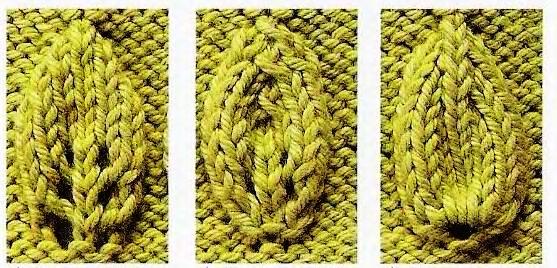
Blackberry knitting. Continuous hilly knitting, is also known under the name triple knitting as in the alternating ranks three loops are carried out from one loop, and one is carried out from three loops. 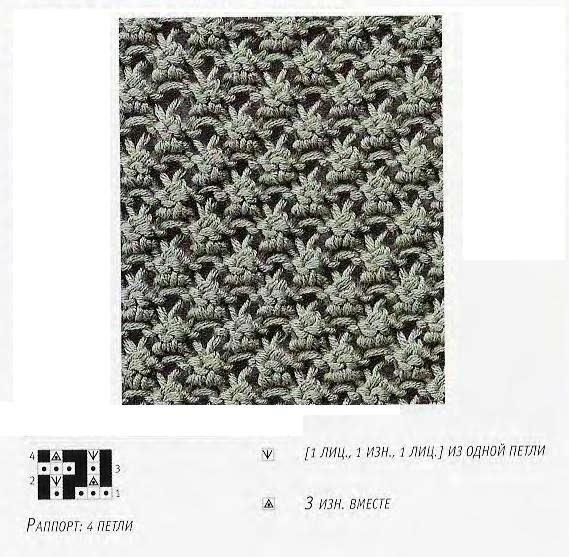
Elastic band with small knots. Here, the tiny small knot adds textural effect of smooth surface of elastic band which loops are carried out from back walls. 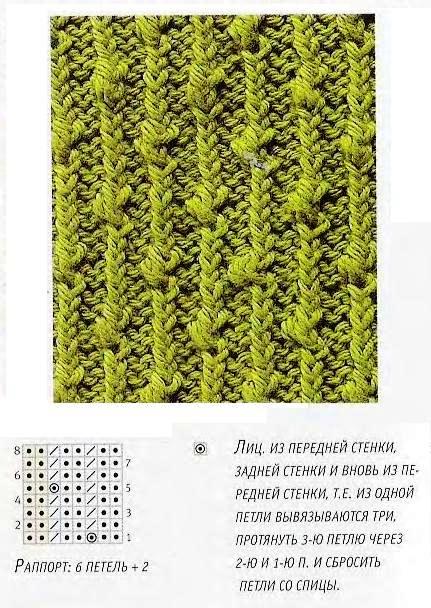
Elastic band with bumps. In this sample of knitting of bump are executed so closely to each other that under their influence the elastic band contracts, but does not stretch. 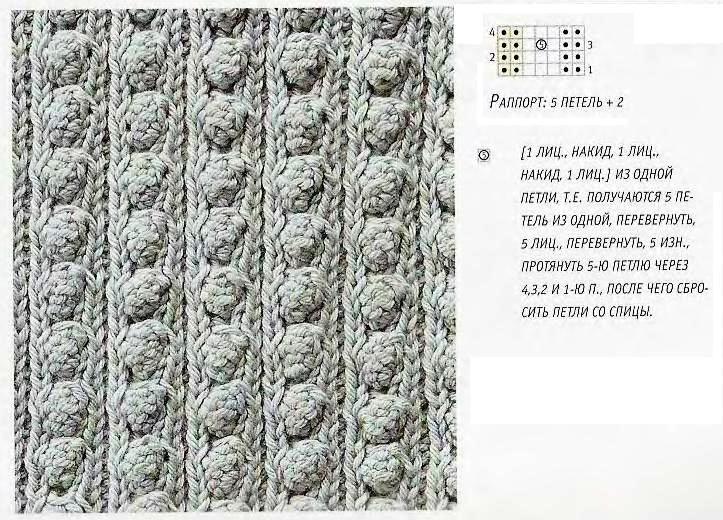
Blocks with bumps. Bumps from back loops are evenly distributed on the blocks from chulochny knitting outlined by the alternating ranks from front and back loops. 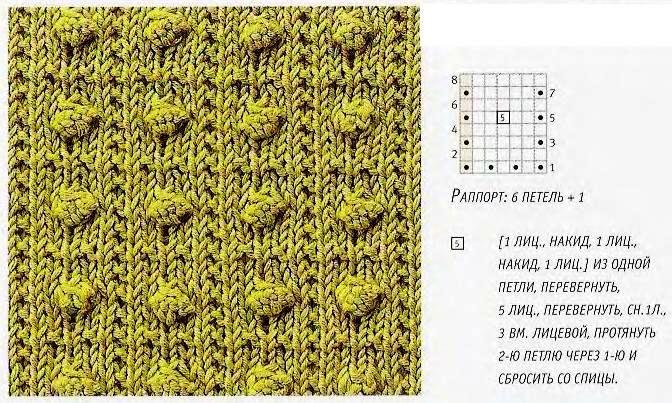
Bumps and wave. The wavy elastic band is not result of interlacing of loops, it is executed by means of decreases and additions. Bumps emphasize each bend of wave
. 
Bumps and braids. The panel from braids consists of several interlacings from five loops which are combined in such a way that in the center of sample there is place for bumps.
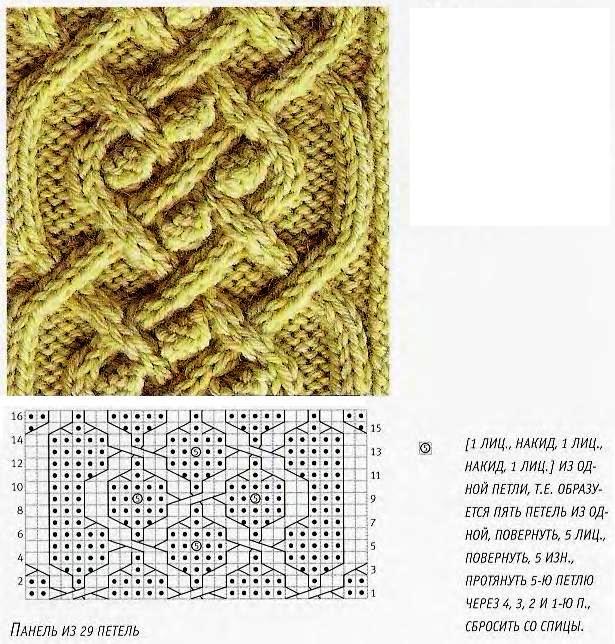
Triple bouquets. Traditional knitting with bouquets has only two branches with four bumps. In this case the number of branches is increased to three, and bumps — to six. Several times provyazhit pattern according to the scheme, and you will understand how to add additional branches to pattern of bouquets.
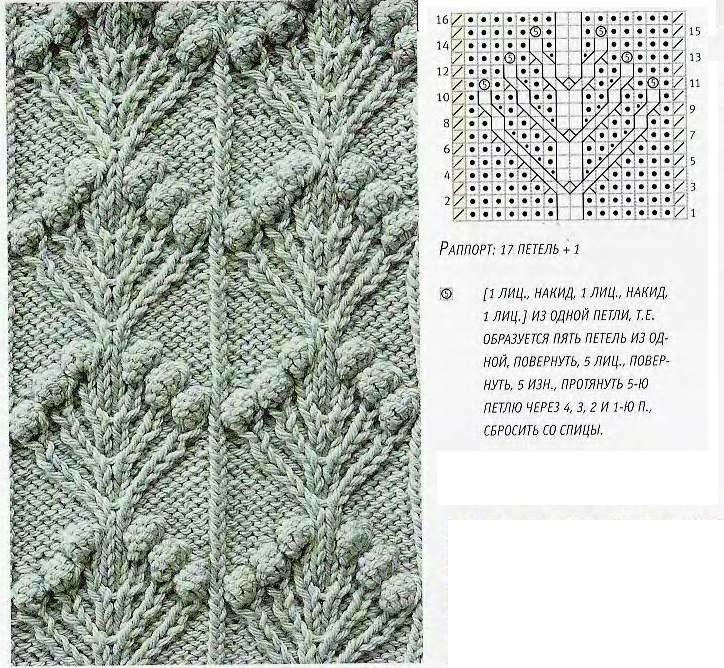
Braids with bumps. Three convex bumps from back loops are framed with the oval braids lines. Wide braid from five loops between which interlacings, in the center, there is enough place for bumps is again applied. 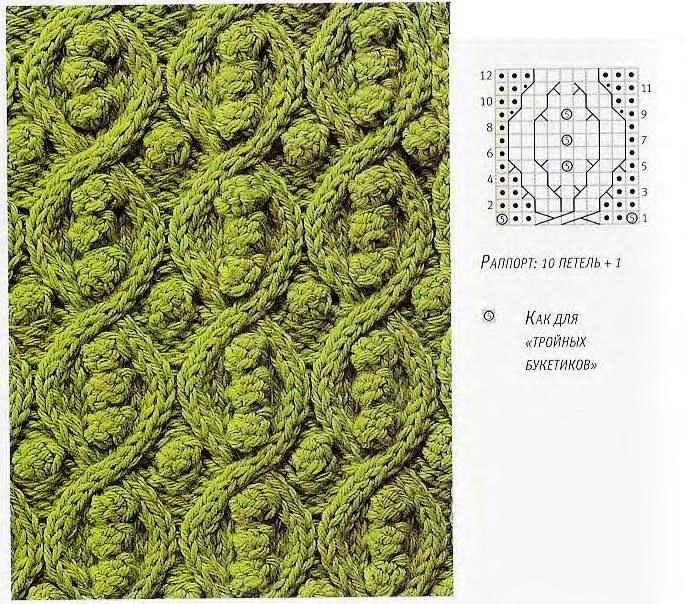
Large leaf and the crossed loops. It is very simple to execute small decussations from each party of leaf, however in process of extension of the sheet plaits are deformed and slightly bent therefore the sample of knitting seems more difficult, than it is actually.
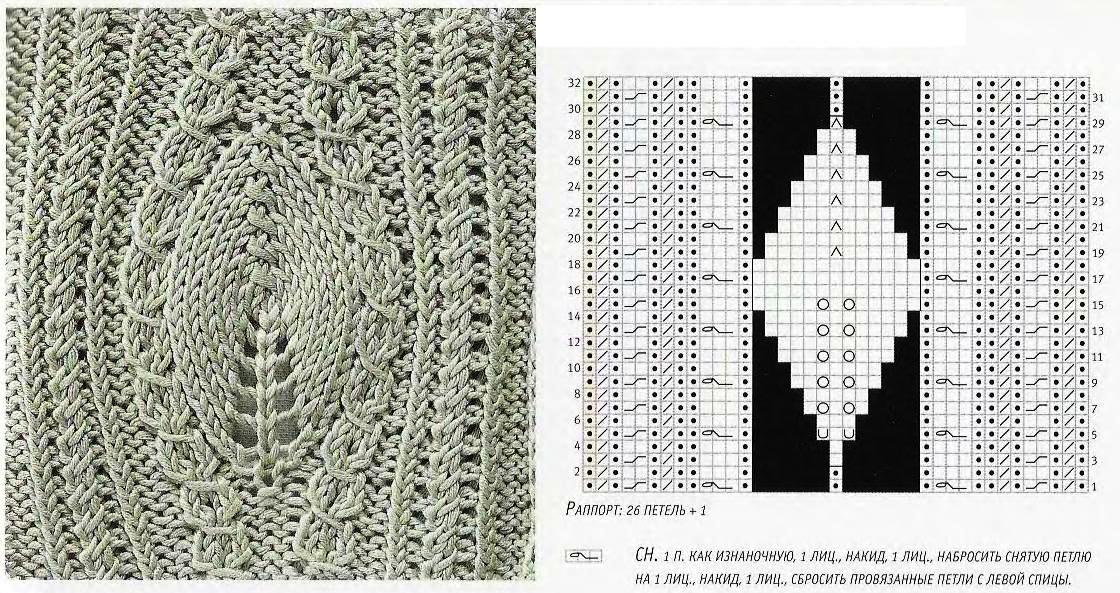
Bumps in berries of strawberry of the Bump can be used for giving of accent to openwork knitting, and also braids. In this sample berry motives are located in chessboard order, it is easy to execute the panel, for this purpose it is necessary to repeat the first 12 rows only. 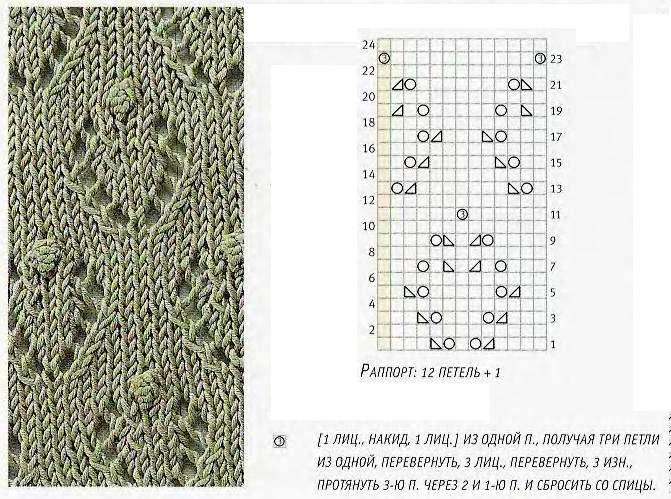
Flower escapes. These charming small florets have narrow leaflets as open additions are executed against the return chulochny knitting. 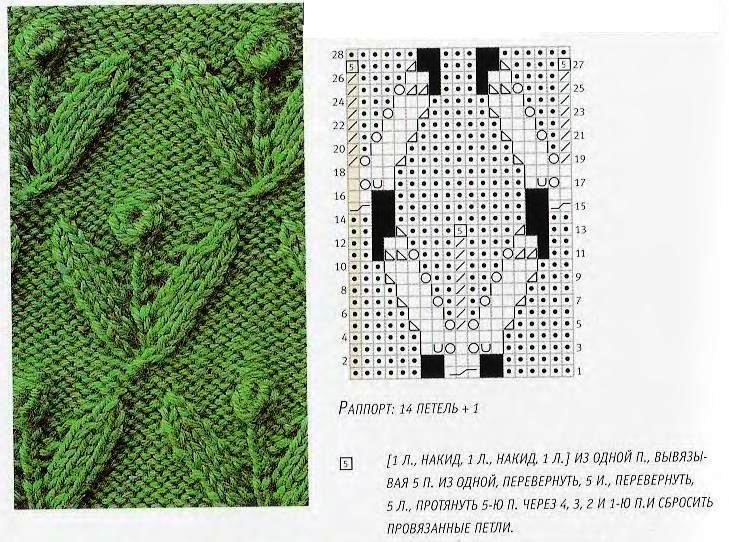
Twisted braid with leaves and bumps. The scheme of the leaf executed in the center of rhombus is given separately to facilitate performance of the main pattern of knitting — plaits
. 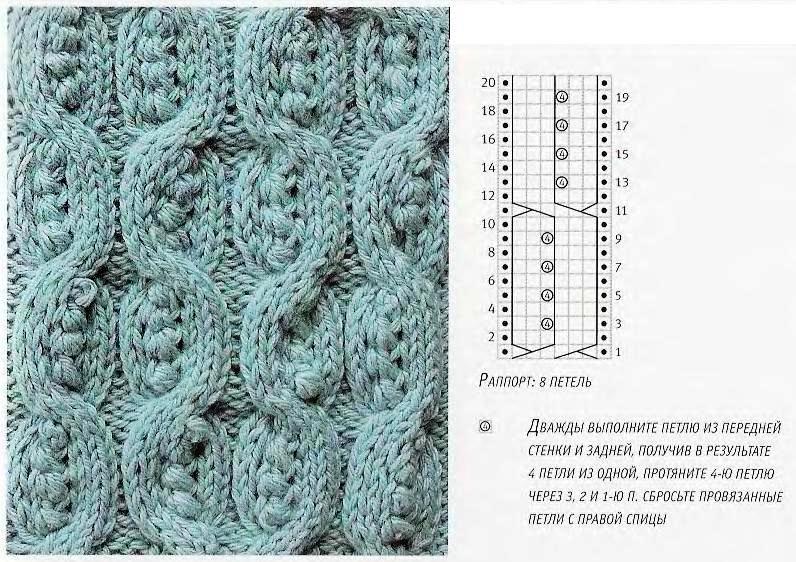
Celtic grapevine. Reminds the motive life tree decorating ancient stone crosses. In this sample there is additional small scheme of leaf which is given separately to facilitate performance according to the main scheme of curved stalk from the crossed loops
. 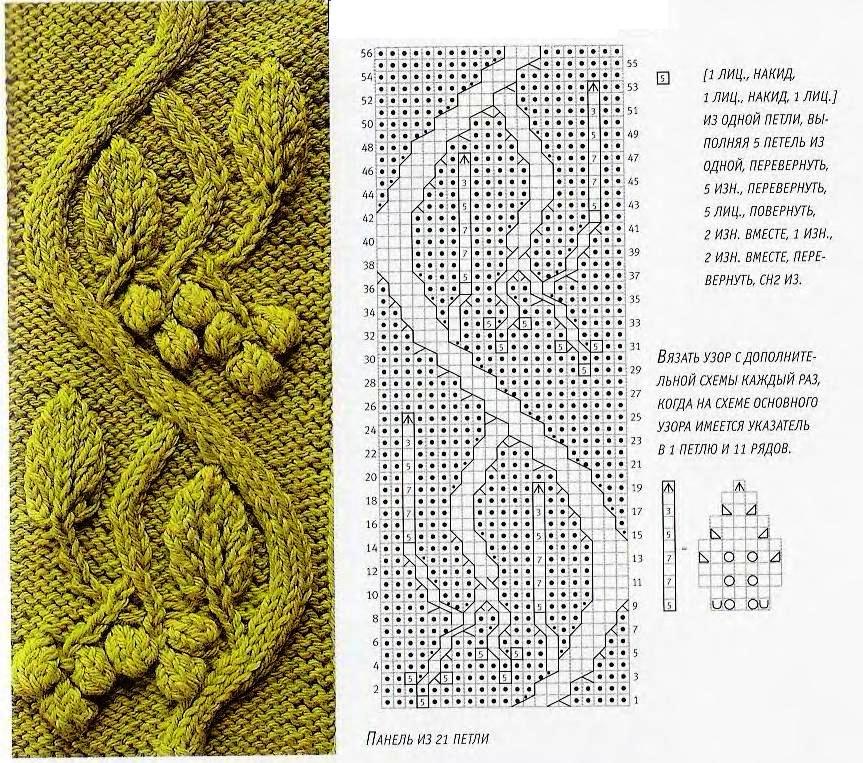
Leaf in the form of heart. Surface of this motive slightly convex as the most part of increases is compensated by decreases. Decreases when one is formed of 5 loops, are carried out in upper part of each share of motive, demand the detailed description, however to execute them rather easily if to remember that each party has to be specularly reflected from the central loop. 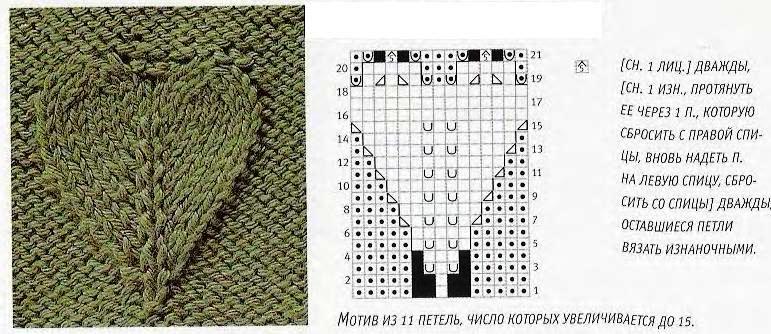
Flower. Easily changeable motive as you will not need to calculate quantity of loops of pearl knitting and the location of bumps. You can change the size and quantity of petals depending on thickness of your yarn.
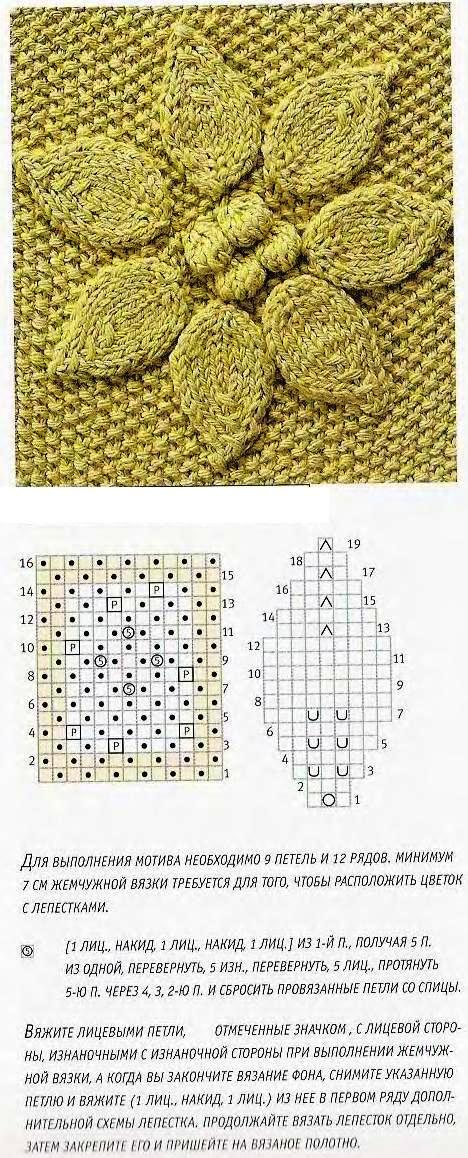
Convex knitting. By means of regularly carried out additions and decreases the convex surface is created, despite addition of new loops and decrease of the loops which are already existing in each front row total number remains invariable. 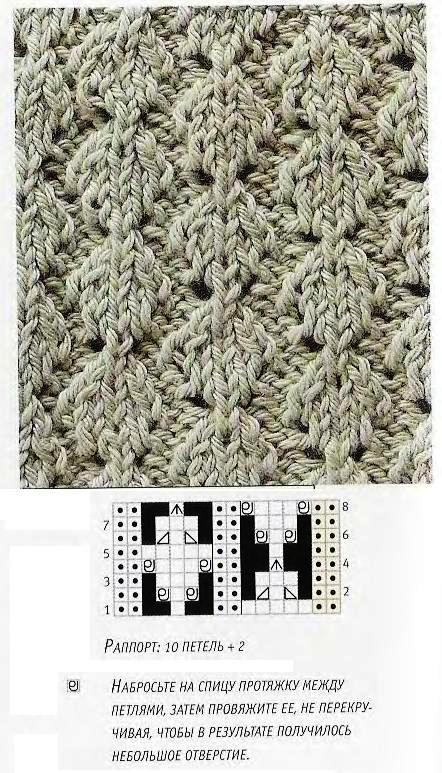
Twisted braid with small knots. Small knots match quicker, than bumps as it is not required to overturn work. You can replace large node from knitting sample with small bump from any other sample of knitting. 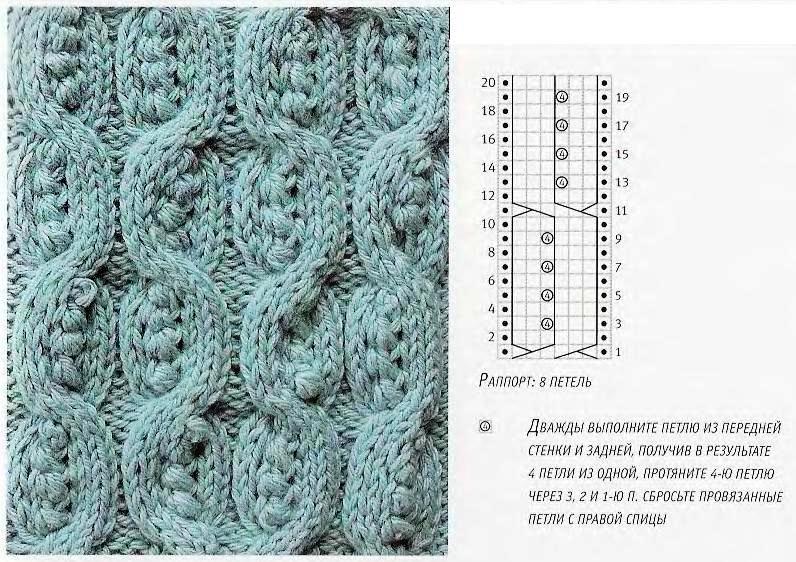
Hand bells. To execute shaped edge, having taken this sample of knitting as basis, gather rapport from 12 loops + 4, then, in the third row knit 8 front instead of the loops gathered according to symbols. Continue knitting of hand bells according to the scheme, as a result, you form quantity of loops, multiple to four.
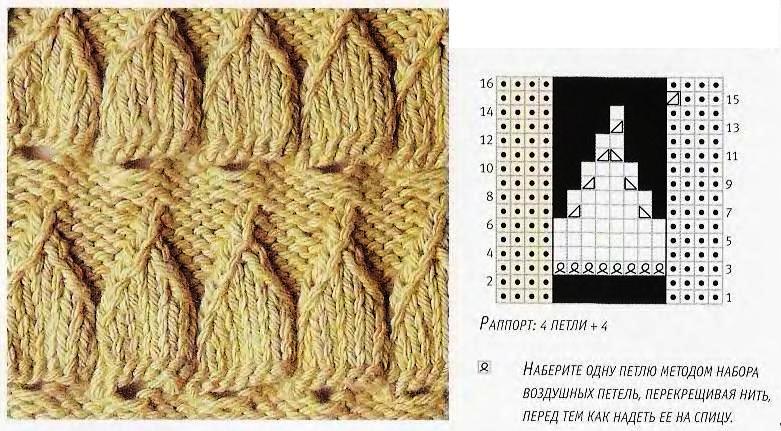
No comments:
Post a Comment